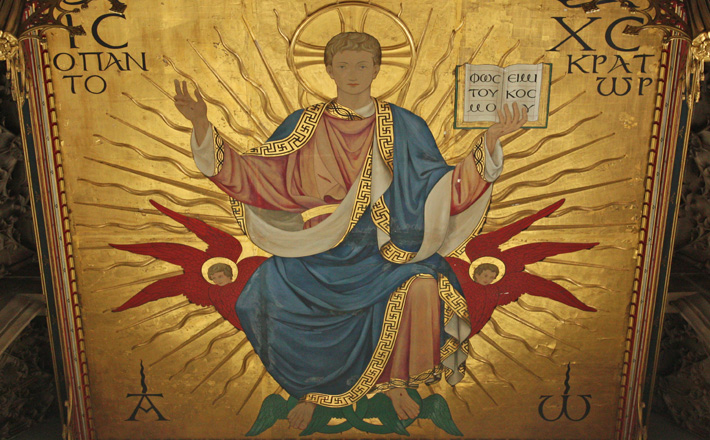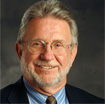Commentary on Psalm 149
Presumably, Psalm 149 was chosen as the lectionary psalm for All Saints Day because the “saints” show up three times in this psalm (verses 1, 5, 9 NIV).
Indeed, no other psalm has such a “triple play” of saintliness. In NRSV, these are the “faithful”; more significantly, in Hebrew, they are the hasidim (though this is not yet the eighteenth-century movement of mystical Judaism that now shares that name).
What did it mean in biblical times to be hasid, a faithful one, a saint? The key has to be the adjective’s relation to the noun: hesed, God’s own “steadfast love.” Thus, the “saints” in the Old Testament were those who lived in a mutual relationship of hesed with God. The relationship worked both ways. Primary, obviously, was God’s own steadfast love — pure undeserved gift and the basis of any possible human response or “saintliness”: “The LORD, the LORD, a God merciful and gracious, slow to anger, and abounding in steadfast love and faithfulness, keeping steadfast love for the thousandth generation, forgiving iniquity and transgression and sin” (Exodus 34:6-7). In the Bible, sainthood is God’s work, first, last, and always.
Still, as we know, that divine self-definition in Exodus 34:7 continues: “…yet by no means clearing the guilty, but visiting the iniquity of the parents upon the children and the children’s children, to the third and the fourth generation.” Quite apart from the severity of this expression of the act-consequence connection in Deuteronomic law, the observation remains that where there are “saints” (faithful ones), there are also the guilty or the wicked.
The contrast appears often in the Psalter, as, for example, in Psalm 97:10: “The LORD loves those who hate evil; he guards the lives of his faithful [saints]; he rescues them from the hand of the wicked.” The psalmists know the world is not benign and that there are both expectations and costs to living faithfully with God. There will be tasks to fulfill and enemies to avoid. The great saints of the church have known the same, and that memory is retained in some of the texts, prayers, and hymns used for an observance of All Saints Day.
Finally, however, the major focus of those texts, prayers, and hymns is not the trials of sainthood, but rather the joys. We remember that the saints who have departed now “rest from their labors” (Revelation 14:13), and we are invited to sing with them, anticipating the bliss they already experience, basking forever in the fullness of God’s steadfast love.
Psalm 149 would not yet have been able to sing of eternal bliss, but it was quite able to revel in the bliss of present worship. Israel’s praise, too, had what we might anachronistically call an eschatological dimension — entering already, through ritual, song, and story, into the fullness of life that God has always meant for God’s people, but that is now frequently hidden by personal trials and communal distress.
Psalm 149 is one of the “final Hallel,” those five songs of praise that conclude the Psalter — five, perhaps, to match the five “books” of the Psalter, those in turn matching the five books of Moses. All things hang together in those “fives,” and the five final psalms sing of God’s works in creation and history, in our personal and communal lives, that eventually leave us to do nothing else but praise, along with “everything that breathes” (Psalm 150:12), the Psalter’s closing invitation.
Psalm 149 describes worship as a time of exuberant song and dance. My daughter, a liturgical dancer, is always armed with a collection of Bible verses to foil those church people who seek to deny the validity of her art, and Psalm 149:3 is high on her list: “Let them praise his name with dancing, making melody to him with tambourine and lyre.”
Still, though her reference is appropriate, the dance described in the psalm seems to have resembled the ritualized war dance of native tribes more than the gracious movements of young women and men in a church chancel: “Let the high praises of God be in their throats and two-edged swords in their hands” (verse 6). Indeed, many linguists trace the root of “hallelujah” onomatopoeically to the ancient and present practice of repetitive ululation: “ha-la-la-la-la….” War dance, ululation, two-edged swords! To enter the worship of ancient Israel would have been for us a profoundly cross-cultural experience!
The connection of Psalm 149 to tribal dance is appropriate. Israel, too, was a tribal culture, and its worship would have expressed those traditions, including enacting ritualized victories over real and mythic enemies (verses 6-9). Such ritual victory anticipated and celebrated God’s own ultimate victory over wickedness, preparing the present congregation to recognize and share in the working out of God’s justice and righteousness in the present.
This immersion in praise was by no means a retreat from the world; it provided hope, encouragement, motivation, and support to the congregation to join with God is gathering the outcasts, healing the brokenhearted, and lifting up the downtrodden (Psalm 147:1-6; compare also 146:5-9). Healing the world is serious work — God’s work, of course — and those who are called first to praise that divine work and then to participate in it will need metaphorical and sometimes perhaps real two-edged swords.
Can we design worship that celebrates life as fully as does Psalm 149? Can our worship so fully prepare us to resist all forces that stand in the way of God’s justice, salvation, and shalom? Can our worship hear and echo the praise of all God’s creation, as does Psalm 148? All of this is brought together in the Psalter’s final Hallel, and all of us are called to join the dance.


November 3, 2013